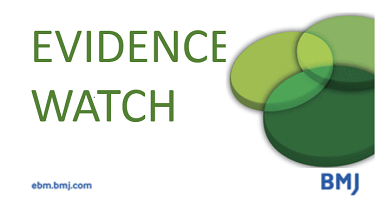A recent review suggests paracetamol may be as effective as ibuprofen for the closure of patent ductus arteriosus. But there is much more to come with 19 more trials due to report.
Carl Heneghan

In preterm newborns, the mainstay of treatment for patent ductus arteriosus have been ibuprofen or surgery; however, case reports have suggested paracetamol might be a useful alternative,
A recent Cochrane review included eight RCTs (n=916 infants) of paracetamol for the closure of PDA. Five moderate quality trials (n=599) comparing paracetamol with ibuprofen found there was no overall difference in ductal closure rates. Four studies reported on gastrointestinal bleeding rates and found they were lower in the paracetamol group (NNT 17, 95% CI 11 to 50). Platelet counts and daily urine output were higher in the paracetamol group.
Paracetamol improved closure rates compared with placebo or no intervention in two low-quality trials of 80 infants (NNT 5, 95% CI 2 to 50). In the two low-quality studies comparing paracetamol with indomethacin (n=277), there was no difference.
The authors concluded there is a need for longer-term studies given the concerns over neurodevelopmental problems following exposure to paracetamol, There are currently 19 registered ongoing trials. This is, therefore, definitely one review update to watch out for.
Paracetamol (acetaminophen) for patent ductus arteriosus in preterm or low birth weight infants. Ohlsson A. & Shah P.S. 2018. Cochrane Database of Systematic Reviews, 2018(4), CD010061.
More from BMJ EBM
BMJ Evidence-Based Medicine – original evidence-based research, insights and opinion
Read more in the Welcome to BMJ Evidence-Based Medicine Editorial.

Competing interests
Carl has received expenses and fees for his media work including BBC Inside Health. He holds grant funding from the NIHR, the NIHR School of Primary Care Research, The NIHR Oxford BRC and the WHO. He has also received income from the publication of a series of toolkit books. CEBM jointly runs the EvidenceLive Conference with the BMJ and the Overdiagnosis Conference with some international partners which are based on a non-profit model.